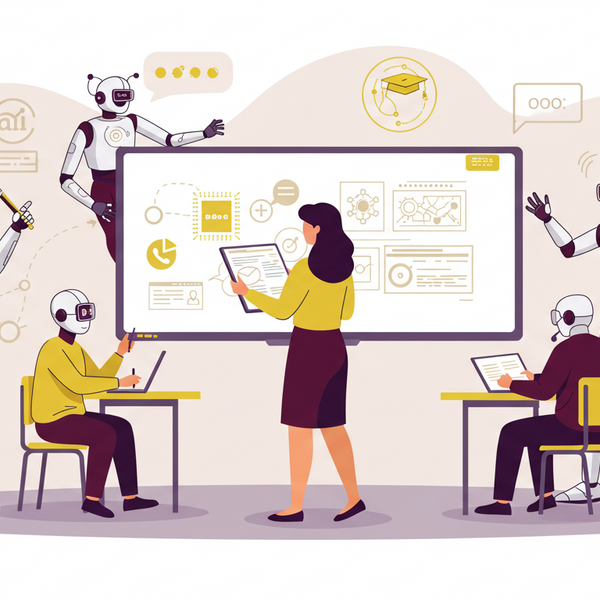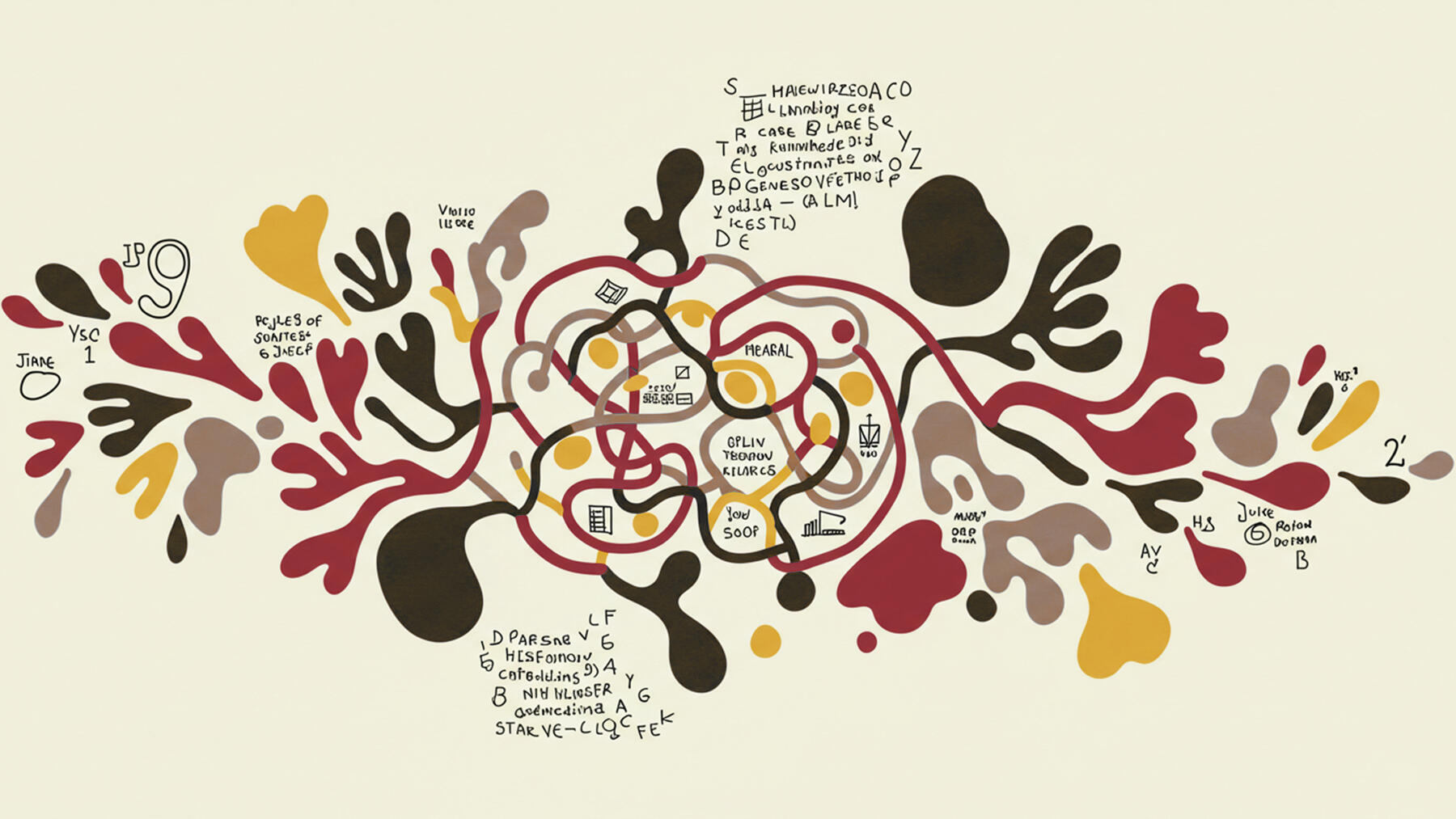
How to Use Knowledge Base (RAG)
What is Knowledge Base?
Knowledge Base is a library of files and URLs from which your AI bot can retrieve information. It helps to provide more accurate and helpful answers. Builders can upload and manage files here. It uses a framework called Retrieval Augmented Generation (RAG).
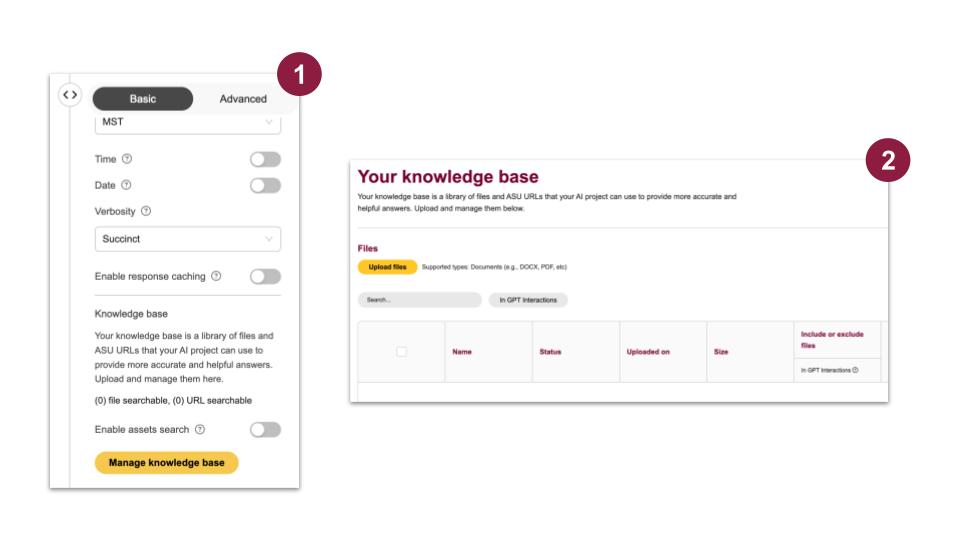
What is Retrieval Augmented Generation (RAG)?
Retrieval Augmented Generation (RAG) basically allows LLMs - which are trained on general knowledge from the Internet - to access your organization’s data and knowledge.
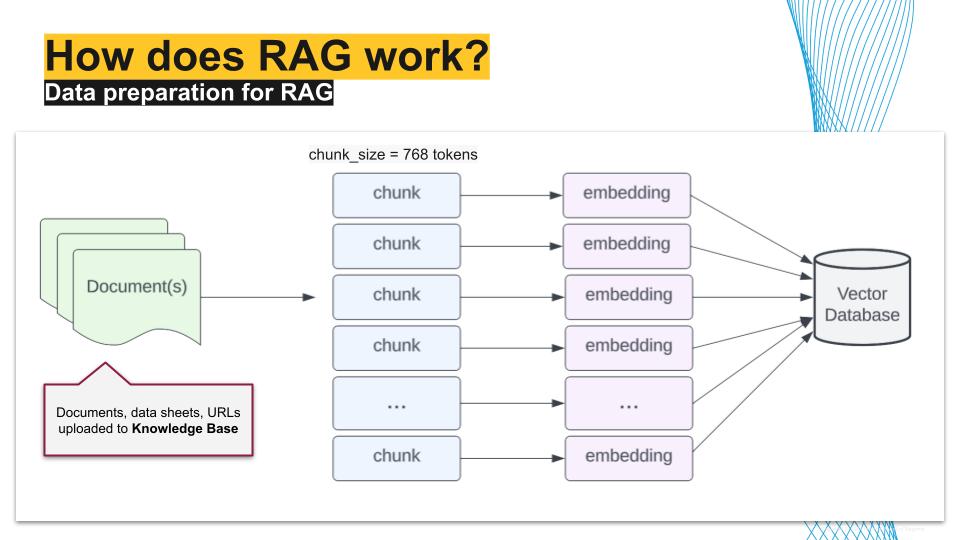
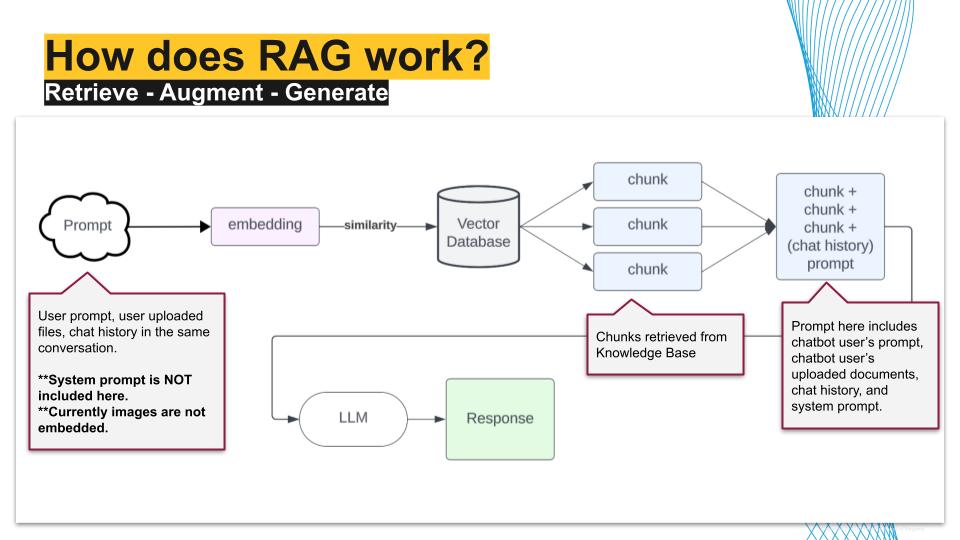
Knowledge Base Retrieval Types
Top K: A variable that sets the number of top chunks to be retrieved. A higher 'K' value means more chunks are retrieved, which can improve accuracy but may slow down response time.
Retrieval type: This allows you to determine how information is retrieved from the selection in the dropdown
- 'Chunk' retrieves specific sections that are the most similar to the user prompt.
- 'Neighbor' retrieves related content that is most similar to the user prompt, and retrieves 1 chunk before and 1 chunk after.
- 'Document' retrieves the entire document for context.
When to use which retrieval method?
- Chunk: This is best used when the answer to a user's query might be found in a small section of text within a larger document.
- Neighbor: This is useful when LLM needs more context surrounding the direct answer to the user query.
- Document: This works best when the user query requires LLM to understand the entire documents.
- When experimenting with different retrieval methods, pay attention to quality of output, latency, and context window limit.
Keep Reading
Students Using CreateAI: What Happens When You Upload a File?
If you’re using a CreateAI chatbot as part of a class, research, or student service, you may have the option to upload files like PDFs, assignments, or notes into the chat. Here’s what you need to know about how your files are handled and your privacy is protected.
CreateAI Builder: What Faculty Should Know About Student File Uploads
If you’ve created a custom bot using CreateAI Builder for students to use whether for advising, coursework, or academic support, here's what you need to know about how student file uploads are handled and what safeguards are in place.
This guide covers storage, privacy, copyright, and recommended practices for faculty-led bots.
CreateAI Office Hours Details: Get Help and Share Feedback
We’re excited to share how you can connect directly with the CreateAI team for live support, feedback, and community learning. Our weekly office hours are designed to help both general users and our dedicated beta testers get the most out of CreateAI Builder.
